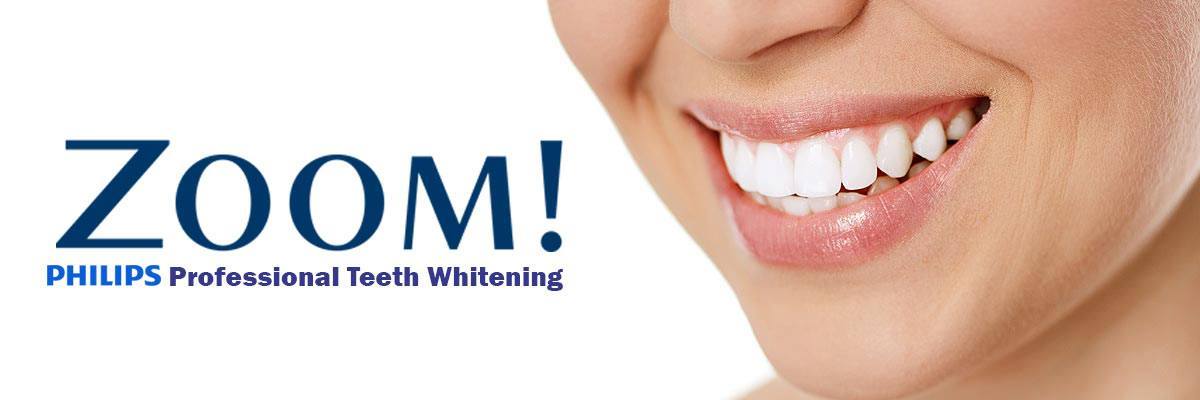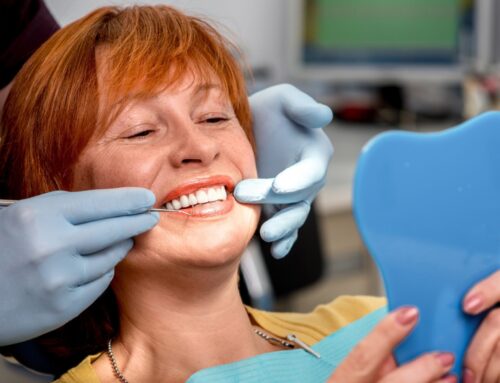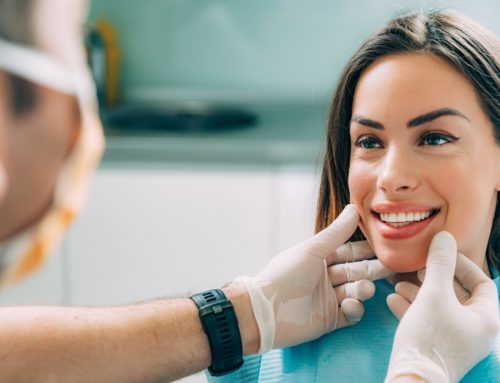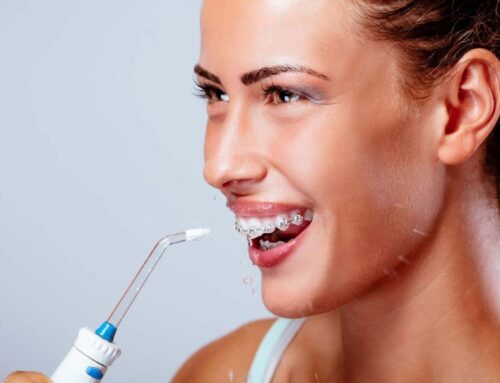Putting Some Zoom into Tooth Whitening
No matter what other dental issues you may have, the one that many of us are most self-conscious about is the colour of our teeth – and the increasing importance of social media certainly has accelerated this trend. But in the real world of face-to-face encounters, we can’t rely on photo filters to cover up the colour of our teeth. That’s why tooth whitening is such a popular treatment; it gives us the power to improve how we are seen by co-workers, clients, strangers and friends. Whiter teeth are always in style, and once you know your teeth look flawless, you’ll have the self-confidence to smile without hesitation.
Unfortunately, it’s common for teeth to become yellower or darker over time due to exposure to coffee, tea, red wine and acidic or sugary foods. Tobacco is in a class of its own for its capacity to stain and degenerate teeth, but no matter what you consume, discoloured teeth are a natural part of getting older. Our teeth need all the help they can get to preserve and restore their original beauty, and while serious dental issues are always the first order of business, we can’t ignore the importance of feeling good about our appearance.
Alternatives for whitening teeth include toothpastes/gels, in-office whitening treatments, take-home whitening kits, and – if the issue is structural, rather than aesthetic – porcelain crowns, veneers or composites. Your dentist can discuss what the best options are, since every mouth is different, and it’s important to take into consideration any pre-existing conditions. A product that works for a light whitening task won’t be effective for someone who has extensive staining, and most at-home treatments are designed for maintenance rather than significant transformation.
Results from whitening will vary depending on a number of factors, including future consumption of staining products (such as coffee) and daily dental hygiene routines, but before a whitening treatment is selected, any underlying dental issues should be treated. Patients with yellow-stained teeth tend to have better results with some whiteners than those with grey or bluish-grey teeth. Colouration, bands, blotches or spots due to tetracycline use or fluorosis can be more difficult to treat, and sometimes won’t whiten at all, while teeth with fillings or cavities are also less receptive to whitening procedures. Previous orthodontic treatments can cause teeth to whiten unevenly if any resin was not properly removed, or if there was over polishing of the teeth during removal. Patients with porcelain fused to metal crowns, amalgams, lingual bars or implants may have increased sensitivity, and most whiteners are not intended to lighten artificial teeth, caps, crowns, veneers or porcelain, composite or other restorative materials. If a dental prosthetic or other type of restoration is present, a patient may decide to have it replaced to match their newly whitened teeth; talk to your dentist about your concerns to find the best option and discuss what results can be expected.

The Zoom lamp’s visible LED light is an integral component of the whitening treatment. To prevent exposure of soft tissues to LED light, our professionals apply LED-blocking materials that are specifically selected for this purpose. During the entire treatment, a plastic retractor is placed in the mouth to help keep it open, and the soft tissues (i.e., lips, gums, cheeks and tongue) are covered to ensure they are not exposed to either the gel or the light. A visible LED light filter covers the patient’s eyes. After the treatment is completed, the retractor and all gel and tissue coverings are removed from the mouth. All of this care is provided by our knowledgeable and experienced professionals, who are dedicated to giving you the best possible results.
Your dentist will make every effort to ensure maximum comfort and minimum inconvenience, but several issues might affect your tooth whitening treatment:
Tooth sensitivity/pain: During the first 24 hours after Zoom treatment, some patients might experience minor sensitivity or pain in the teeth that were treated. This is normal and is usually mild, but it may be worse in susceptible individuals. In rare cases, some discomfort might persist for longer periods of time. People with pre-existing issues – such as sensitivity caused by gum recession that exposes root surfaces, exposed dentin, untreated caries (cavities), cracked teeth, abfractions (loss of tooth structure at the meeting point of tooth and gum) and other dental conditions that can allow higher penetration of the gel into the tooth – might experience increased or prolonged tooth sensitivity or discomfort after Zoom treatment.
Gum/lip/cheek inflammation or burn: Improper isolation and blocking of soft tissue during the whitening procedure can sometimes cause inflammation of the gums, lips or cheek margins due to exposure of a small area of those tissues to the whitening gel or the LED light. A chemical burn can be caused if the whitening gel comes in contact with soft tissue. This type of inflammation or burn is usually temporary and will subside in a few days, but may persist longer and may result in significant pain or discomfort, depending on the degree to which the soft tissues were exposed to the gel or LED light. We take every precaution and adhere to the highest professional standards to reduce exposure of soft tissues to both the whitening gel and the LED light during the process. Keep in mind that whitening services are not regulated, so even an operator with the same system can produce very different results. Trust your dentist to uphold the highest professional standards for tooth whitening, which will also minimize the risk of injury.
Dry/chapped lips: The Zoom treatment involves at least three 15-minute sessions, during which the mouth is kept open continuously for the entire treatment by a plastic retractor which covers the lips. This can result in dryness or chapping of the lips or cheek margins, which can easily be treated by application of lip balm, petroleum jelly or Vitamin E oil.
Cavities or leaking fillings: Most dental whitening is indicated for the outside of the teeth, except for patients who have undergone a root canal procedure, which can increase sensitivity considerably. Any open cavities or fillings that are leaking could allow gel to penetrate the tooth, resulting in significant pain.
Cervical abrasion/erosion: This shows up as grooves, notches and/or depressions that appear darker than the rest of the teeth, along the gum line where there are usually signs of gum recession. As the gums pull away from the teeth, they expose the roots of the teeth and cause increased sensitivity. Exposed roots such as these appear darker because they lack the enamel that covers the rest of the tooth surface. Even if these exposed roots are not currently sensitive, gum recession can allow the whitening gel to improperly access parts of the teeth that are not protected by enamel, causing sensitivity. If you suffer from gum recession, these areas will be covered and protected with a dental dam prior to the Zoom treatment.

Zoom WhiteSpeed treatment starts at $499, resulting in teeth that are six to eight shades whiter, guaranteed; relief gel is sent home with the patient to soothe any post-procedure sensitivity. For an additional $99, your dentist will provide custom whitening trays and whitener gel for at-home touch ups. A free tube of whitener also will be provided every six months at your dental hygiene appointment.
Patients undergoing chemotherapy or other medical treatment for serious illnesses, or with disorders such as compromised immunity, should consult a medical doctor prior to beginning this process. Zoom WhiteSpeed is not recommended for pregnant or lactating women. Your dentist can explain the safety, efficacy, potential complications and risks of treatment.
There’s more to dental health (and beauty) than meets the eye. Don’t assume that because whitening is a common at-home procedure, you should bypass your dentist’s advice. And if you’re disappointed with your tooth whitening attempts, maybe it’s time to try the Zoom WhiteSpeed system. We can recommend how to achieve your best smile, with the highest degree of safety, protection and results.
Appointment Request
If you’re interested in any of our procedures, and would like to meet with one of our dentists to discuss options, costs and get additional information, complete this short form and we’ll give you a call to arrange for a no-obligation appointment at our Barrie clinic.









